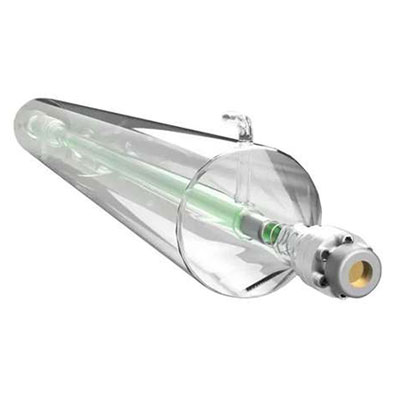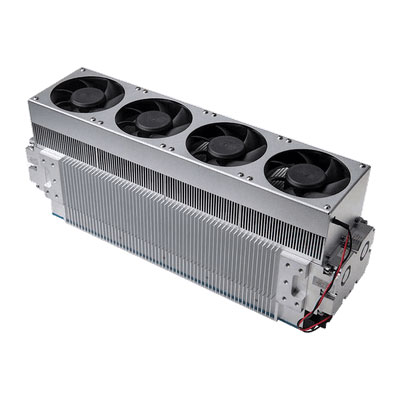CO2 Laser Tubes: RF or Glass?
Overview
What you will learn
In this guide, you will learn about the key differences between Radio Frequency (RF) CO2 laser tubes and their traditional Direct Current (DC) Glass counterparts. Though fundamentally similar, deciding between the two depends on your budget, application requirements, and maintenance preferences.


Introduction
In this article, we will provide a detailed comparison between Radio Frequency (RF) CO2 laser tubes and Direct Current (DC) Glass CO2 laser tubes, highlighting the main advantages and disadvantages associated with each. In order to make the best choice for your specific needs or applications, selecting the most appropriate tube configuration is crucial.
Both RF and Glass CO2 laser tubes function on a similar fundamental principle. They use electricity to excite CO2 molecules within the tube, which then emit light. This light is then concentrated and directed out of the tube to interact with various materials, typically for cutting or engraving purposes. Though they operate on the same basis, these two types of laser tubes differ in their overall design, performance, durability and cost - which ultimately affects their suitability for different applications.
In the following sections, we will investigate these aspects deeper, providing you with the necessary information to make a more informed decision as to which type of CO2 laser tube best fits your requirements.
RF CO2 Laser Tubes
Structure and Operation
- Metal Enclosure - RF laser tubes have a metal outer enclosure, which offers durability and protection for the sensitive internal components.
- Cores - There are two common types of cores, metal and ceramic. The type more specifically refers to the positioning and type of electrodes used to excite the CO2 in the tube.
- Metal Cores: Metal cores have metal contacts which make direct contact with the CO2 media. This leads to corrosion over extended periods of time
- Ceramic Cores: Ceramic cores, on the other hand, use ceramic electrodes which do not corrode. This results in a longer lifespan and more stable performance over time
- Cooling - RF laser tubes are generally cooled with air or water cooling systems. Tubes with lower wattages typically use a combination of fans and heatsinks to circulate the air and keep the tube cool during operation. Higher wattage tubes tend to be outfitted with additional plumbing for water-based systems that enhance cooling.
- Lifespan - RF laser tubes have long lifespans, ranging from 10,000 to 20,000 work hours on average.
Performance
RF laser tubes are known for their high-frequency operation, which allows for rapid pulsing and precise control over the laser output. This makes them particularly suitable for applications requiring fine detail and high accuracy, such as engraving intricate patterns or cutting delicate materials.
Advantages
- Durability - The metal enclosures and ceramic cores (in some models) of RF laser tubes provide excellent protection and longevity.
- Precision - High-frequency operation of RF laser tubes enable precise control and fine detail work.
- Consistency - RF laser tubes generally offer more consistent performance over their lifespan as compared to glass tubes.
- Lifespan - RF laser tubes have longer lifespans in comparison to glass tubes.
Disadvantages
- Cost - RF laser tubes are more expensive than glass tubes, making them a less attractive option for budget-conscious users.
- Maintenance - While RF laser tubes are more durable, any required maintenance or repairs tend to be more complex and costly.
Glass CO2 Laser Tubes
Structure and Operation
- Glass Enclosure - Glass CO2 laser tubes have a more straightforward construction with a glass enclosure. This makes them less durable as compared to RF tubes, as glass is naturally more susceptible to damage from physical impacts or environmental factors.
- Cooling - Glass CO2 laser tubes require water cooling to dissipate the heat generated during operation. This adds a mandatory additional component to the laser system, requiring a water pump and regular maintenance to ensure efficient cooling.
- Lifespan - Glass CO2 laser tubes have moderate lifespans, ranging from 5,000 to 8,000 work hours on average.
Performance
Glass laser tubes operate at a lower frequency as compared to RF laser tubes. While this means they may not achieve the same degree of precision or rapid pulsing, they are still highly effective for many cutting and engraving applications, particularly those not requiring extremely fine detail.
Advantages
- Lower Initial Cost - Glass laser tubes are more affordable due to simpler construction and materials.
- Simplicity - Glass laser tubes are easier to understand and maintain, making them highly accessible for beginners.
- Availability - Glass laser tubes are widely available and easily replaceable.
Disadvantages
- Larger Beam Size - Glass laser tubes are less suitable for tasks requiring high detail and precision.
- Fragility - Glass laser tubes are prone to breakage and requires careful handling.
- Higher Maintenance Frequency - Glass laser tubes need more frequent maintenance and replacements.
Summary of Key Differences Between RF and Glass CO2 Laser Tubes
Cost
- RF Laser Tubes have higher initial costs, but lower long-term maintenance costs.
- Glass Laser Tubes have lower initial costs, but higher long-term maintenance and replacement costs.
Durability
- RF Laser Tubes are more durable with a longer lifespan.
- Glass Laser Tubes are less durable and prone to breakage.
Performance
- RF Laser Tubes have finer beam quality, precision, and speed pulsing; RF laser tubes are better for engraving.
- Glass Laser Tubes are adequate for many applications, but less precise and slower pulsing; Glass tubes are better for cutting.
Maintenance
- RF Laser Tubes require less frequent maintenance, but it is more complex and costly.
- Glass Laser Tubes require more frequent maintenance, but it is simpler and cheaper.
Conclusion
Choosing between RF and DC Glass CO2 laser tubes depends on your specific needs, budget, and application requirements. RF tubes offer stellar performance, durability, and precision, making them ideal for high-demand industrial applications. However, they come with a higher initial cost and are more complex. Glass tubes, on the other hand, are more affordable and easier to maintain but may require more frequent replacements and careful handling.
By understanding the key differences outlined in this guide, you can make an informed decision on which type of CO2 laser tube best suits your needs. Whether you prioritize cost, performance, or durability, selecting the right laser tube will ensure optimal results for your cutting and engraving projects.
If you have any questions or concerns, please send us an email at support@aeonlaser.us for the fastest service. If your laser is malfunctioning, please submit a support ticket.
Did you find this document helpful? Let us know what you liked or what we can improve on by sending an email to helpusgrow@aeonlaser.us.
Happy Lasering!














